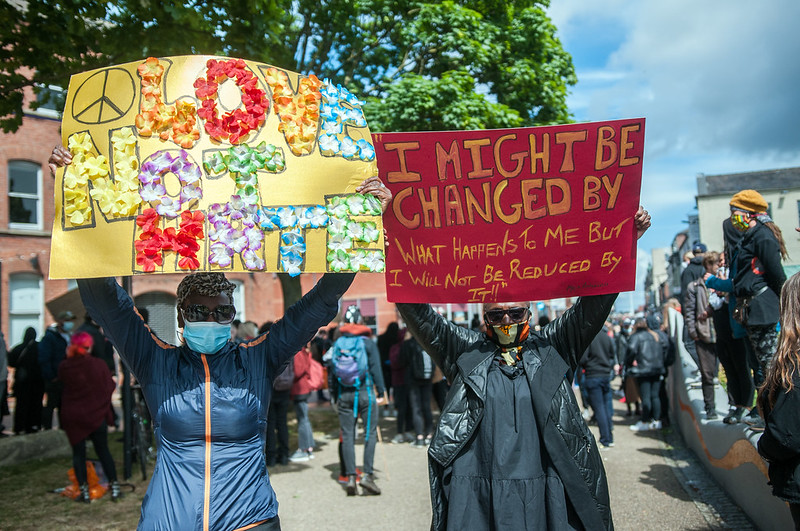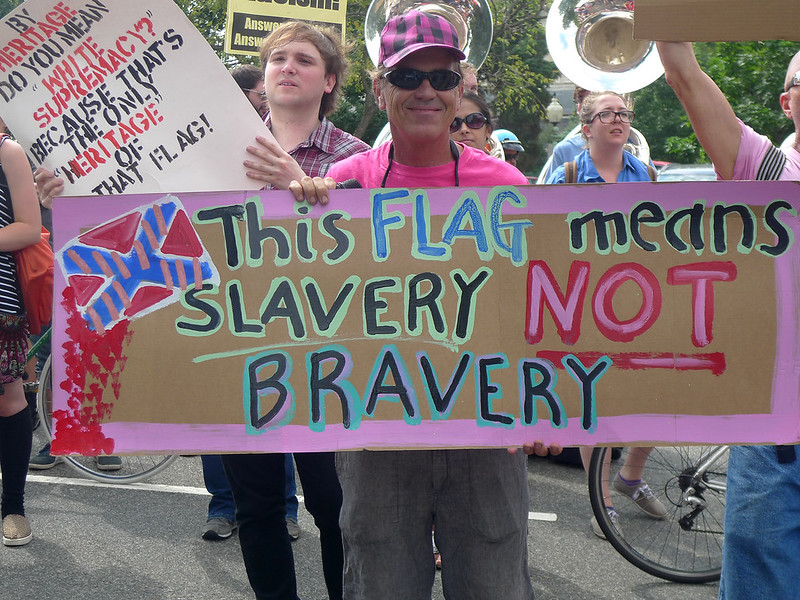
This article was originally published by The Leadership Conference on Civil and Human Rights.
For centuries, a bitter aphorism has defined the Black experience in America: Blacks in this country “may not get all they pay for in this world,” Frederick Douglass noted, “but they must certainly pay for all they get.”
These words rang true in 1852 and they ring true nearly 170 years later today. Since our arrival in this nation, progress for Black Americans has followed a predictable cycle: major legal and social gains, constitutional victories, electoral milestones—all which then trigger a vicious and violent backlash. It’s a bill which never comes late.
No era in American history better exemplifies this cycle than Reconstruction—the post-Civil War period when Black Americans realized constitutional, electoral and economic gains. Blacks formed electoral majorities in Southern states, served in elected office at all levels, and formed state governments that introduced sweeping reforms to education, transportation, and other sectors.
Chastened by this progress, white supremacists declared the need to “redeem” the South with decades of terror and violence. This campaign of terror and racist politics clawed back the unprecedented advances Black Americans made, beginning an enduring and predictable cycle. Black progress met white backlash. And we paid dearly for all we got.
Our nation would see the Reconstruction-Redemption cycle again. This time following the landmark civil rights legislation and legal victories of the 1950s and 60s—which finally cemented into law major gains in voting rights, education, equal employment and fair housing that potentially transformed America itself. But, it wouldn’t last. The bill would come due. White racists struck back with private schools, flight to the suburbs and a nakedly racist “War on Drugs” that spurred a generation of mass incarceration. Even worse was coming.
Reconstruction expert and historian Eric Foner would note in 1981 that “[t]oday, the second Reconstruction has run its course[;] we appear to be entering upon the Second Redemption.”
He was right. That Second Redemption marked the Reagan years when civil rights advancements hit a brick wall, Black unemployment peaked at 21.2 percent, and the president of the United States introduced the nation to “welfare queens,” “Just Say No,” and Clarence Thomas as Equal Employment Opportunity Commission chairman.

As a result, white supremacy was redeemed and the Black community reeled. And boy, did we pay.
Decades later, the 2008 presidential election marked yet another shift. While never inaugurating the “post-racial” society that some claimed, many saw Barack Obama’s election as the beginning of a Third Reconstruction. His election and subsequent administration—made possible by a patchwork of diverse voters and anchored by record Black turnout—ushered in history-making appointments for Black Americans and other people of color, landmark health care legislation, a global climate agreement and an unprecedented nuclear deal with Iran.
He would pay for all of that. So would Black America. Ultimately, the redeemers would strike back electorally in supporting the coalition that elected Donald Trump.
If the election of Barack Obama ushered in the Third Reconstruction, then surely the fact of a Donald Trump presidency marked the advent of a Third Redemption. Trump’s campaign centered the lamentations of disaffected white America at the expense of everyone else. Cries of “preserving our way of life” bounced through the cable news-talk radio echo chamber along with plaintiff wails of the self-proclaimed dispossessed wanting their country “back.”
Even Trump’s campaign slogan trademarked the redemptionist battle cry to “Make America Great Again.” As during the Second Redemption of the Reagan years, those seeking to redeem the nation finally had a White House champion who made clear his allegiance to their racist cause—with people of color stuck with the check.
Trump aides and confederates wasted no time in executing the Redemption agenda. Their overt attempts to rig elections with phony voter fraud commissions were only matched in audacity by their attempts to compromise the census with an equally racist citizenship question. Their immigration strategy is a masterclass in Redemption policies, including the castigation of “s**thole” countries, denial of an asylum process, banning visa applicants from Muslim nations, separating families at the border, locking kids in cages, attacking DACA and temporarily torpedoing student visas under the guise of COVID-19 policy. Altogether, these actions and so many more portend a sinister agenda—the agenda of Redemption.
But, something unusual happened: Progress interrupted the Redemption, not the other way around.
The uprising following the murders of George Floyd, Breonna Taylor and Ahmaud Arbery diverted the redeemers’ march. Arguably forming the largest movement in American history, marchers in the streets roused the conscience of the nation and defied America to reckon with, and pull up, its racist roots. The Pentagon banned Confederate icons, Mississippi retired the confederate flag, and cities cancelled confederate monuments. Corporate leaders and politicians who couldn’t spell Juneteenth on Memorial Day, suddenly cancelled workdays and issued gooey statements about Black Lives Matter.
It was progress, though. And it caused even the most skeptical activist to wonder if this time might be different. Maybe, just maybe, we will finally strike a fatal blow to the heart of racism and white supremacy.
But we shouldn’t declare white supremacy’s defeat just yet, because we can already hear the redeemers regaining their footing. And just as civil rights movement veterans warned us that Jim Crow would simply rebrand as James Crow, Esq. and Jim Crow 3.0, history reminds us that the adherents of Redemption never depart the battlefield. They simply camouflage their ordnance and translate their rebel yells into a coded lexicon of “looting,” “law and order,” “I don’t see race,” and “all lives matter.”
We heard this language in Trump’s bombastic Mount Rushmore speech, which was a veritable battle hymn of Redemption. We heard it in his deploying federal officials to defend confederate monuments of stone while deploying government agents against living, breathing, and peaceful protesters. And we heard it in Secretary of State Mike Pompeo’s bizarre invocation of Frederick Douglass to denounce The New York Times’s 1619 Project and racial justice protesters and their alleged assault on “our way of life.”
With each transformation, the Redemption mob more deftly deploys sophistication, stealth and sleight-of-hand. We must stay vigilant or we will miss the signs and the slick new marketing. Confederate flag bumper stickers will rebrand as the Bonnie Blue flag—an equally offensive, yet less recognizable, confederate icon. Tiki torches will morph into pens signing laws that perpetuate racist laws, systems and policies. Neo-Nazi garb will transform into business suits worn by those who deny home loans, challenge affirmative action laws and restrict access to health care.
Not only must Black America remain on high-alert, but so too must our well-meaning friends who continue to ask how they can meet the moment. They must speak out and rebuke the Redemption agenda—no matter whether it’s propagated knowingly by self-proclaimed redeemers or if it’s perpetuated unwittingly by well-intentioned “allies,” friends and family members who continue to struggle with their inner white supremacist.

The absence of white hoods and tiki torches in Main Street parades should lure no one into believing that the architecture of white supremacy has been razed. It merely suggests that the redeemers are regrouping and rebranding their cause.
Our work is just beginning. The very streets painted yellow with Black Lives Matter can still run red with the blood of Black and Brown bodies. The very corporations issuing saccharine statements about diversity and equality still have boards and leadership teams that look nothing like the people protesting in the streets. The very officials kneeling in solidarity with protestors have dispensed no justice for our fallen. The very leaders who say they value life, simultaneously denounce mask laws and sensible social distancing measures—all while pushing to send our children to potentially unsafe schools. The very allies wearing the Black Lives Matter t-shirts will still vote against expanding school district boundaries and will decamp to private homes, clubs and schools during the pandemic—a privilege not afforded to many people of color.
This reality makes clear that our mission to destroy white supremacy and racism is far from accomplished. In fact, this round of the fight has only just begun.
And while some Americans are prematurely declaring racism dead and gone, let’s be clear: Our society is merely entertaining the idea of change—we haven’t actually changed anything yet. And if we let the redeemers do what they’ve always done, we never will. Racism will still thrive. White supremacy will still abound. Redeemers will still triumph. And, once again, Blacks will still pay for what little we get.





